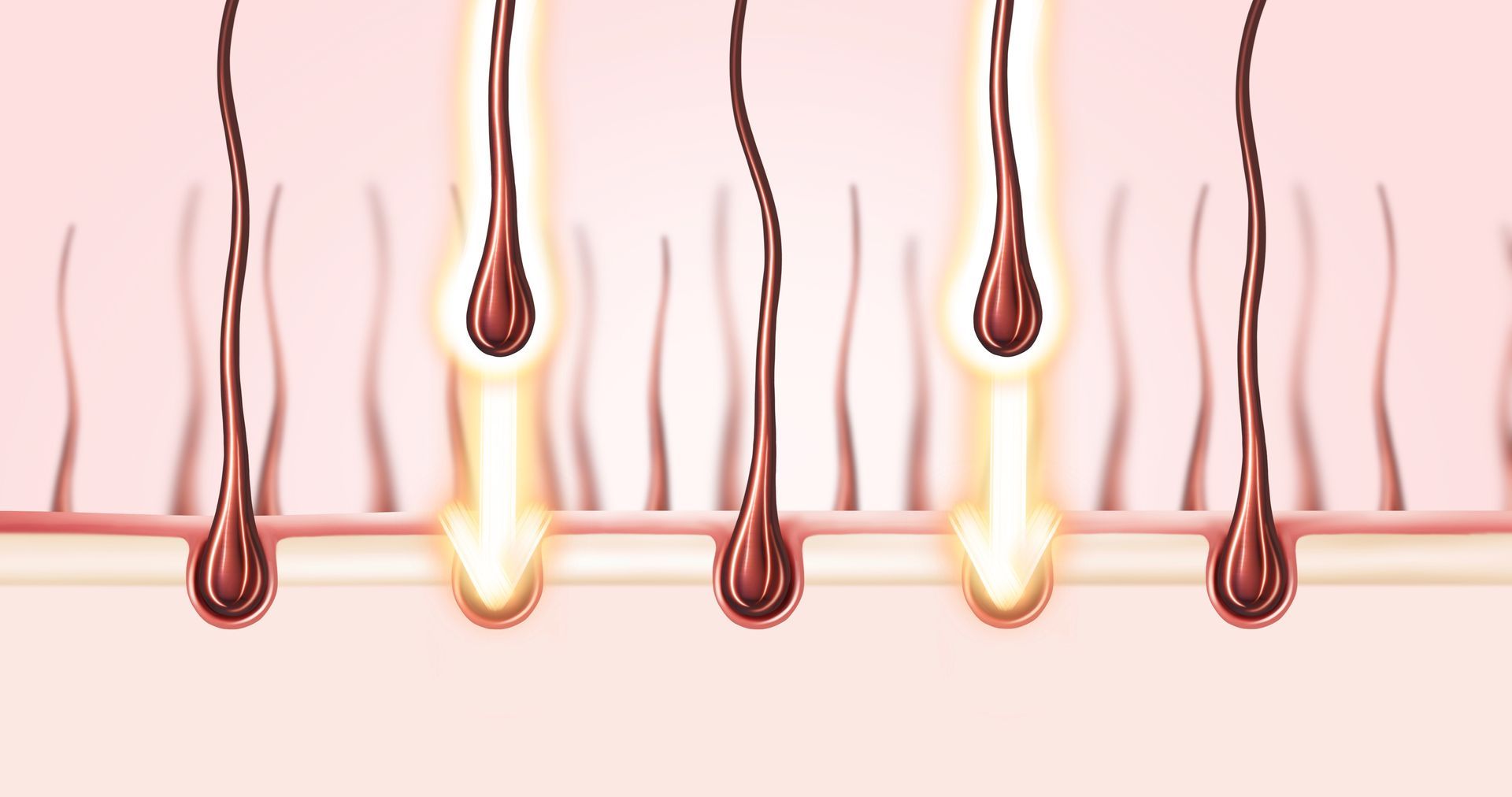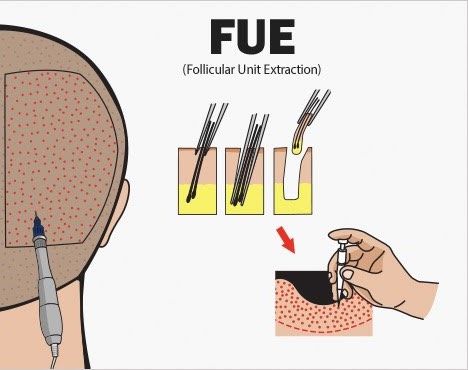Pittsburgh PA
Hair Restoration (Transplant)
Ready to Get Started?
We will get back to you as soon as possible.
Please try again later.
Overview
Hair transplantation has been performed since the 1980’s. In the beginning transplants were performed literally taking big (5mm) punches out from the donor area and placing these big plugs in the recipient area. These punches when placed would be placed in straight lines with spacing in between. It gave the “barbie doll” look. Unnatural and obviously apparent. Usual number of grafts placed was 50 to 100 grafts.
Since that time there has been a huge evolution in the transplant procedure. The number of grafts placed at one setting is easily above two thousand. They are small, packed tight with no lines or apparent organization. The number of grafts decided upon is decided on the concept of supply and demand. What the need is, the desired result and what the donor area can spare.
Our Techniques

Follicular Unit Transplant (FUT)
Hair does not grow in clumps or plugs but rather in what are called, follicular units. A follicular unit is where nature places hair individually as one follicle, one hair. Or there can be two hairs together, three hairs nestled and even four hairs together. These are “units” of hair. So, when hair is transplanted you want it transplanted in its natural state (in units).
The hairline is created based on age, current and projected hair loss and finally, the contour of the face and head. In the follicular unit transplant (FUT) procedure the occipital area of the scalp (donor area) is not totally shaved. The hair can be long. The hair is combed up out of the way and then there is a thin area that is shaved from side to side. Approximately one ½ cm wide and possibly 10 to 14 cm in length. In other words, a ribbon of hair is shaved.
Anesthesia is given locally. The strip (ribbon) is then removed, and stitches are placed to bring their edges back together. The result is a linear scar about the size of the lines on your palm. The hair is then released covering what was done in the back. The team then dissects out the follicular units in their normal state. The recipient area is then given Anesthesia, so the patient feels nothing regarding discomfort.
Using a small “needle devise” small “openings” are created in the skin and each follicular unit is placed into its own space. They heal in place and begin to grow 8 to 12 weeks after that. Hair grows about a ½ inch per months so by 8-10 months out the patient has the desired look.

Follicular Unit Extraction (FUE)
This technique is where the patient is in a prone position, lying down. Anesthesia is given to the area. Using a 0.8 mm to 1.0mm punch, each unit is individually removed.
This is more time consuming than the Follicular Unit Transplant since each is removed individually. The placement of the grafts is the same as the Follicular Unit Transplant method.
Why Choose Us?
Dr Boles has lived through the evolution of hair transplants and has easily performed over 10,000 cases. There are very few practitioners out there that have experienced this evolution. Why would I say this is important? Dr Boles would reply with, “if you have never seen “bad” can you truly appreciate “good.” “If you’ve never gone through the struggle, can you fully appreciate the present.”
With him and his team they have a combined experience in hair over 50 years which is unmatched by any other clinic. He has traveled the world to such places as London, Hong Kong and Dubai opening offices and training doctors and staff. Dr Boles is present throughout the entire procedure firsthand, difficult to say for others. We treat all ethnicities understanding that there are clear differences between ethnic groups. These differences certainly come in to play with the transplant.
We treat both men and women. Balding is felt to be a man’s issue but women are affected as well. Ten percent of clients are women because women have a few more options and tend to be more creative them men. But that number is growing because like men, women want their own hair. We transplant head hair, beards and eyebrows. Men are wearing facial hair now and those with weak beards want them stronger. Women although have options with their eyebrows, want real hair.
The FUT procedure can sometimes be quicker and better tolerated during the procedure. Some people quite simply do not want to lie down for several hours as in the FUE. It takes 15 minutes to remove the ribbon of hair and put stitches in. Then you can get up and move, text, make a phone call or watch television. The downside is you do have a linear scar on the back of your head, in the occipital area. If your hair has some length no one will ever see it though.
With the FUE there is no visible scarring, and most people prefer that. Some people do state the post-op discomfort with the FUT is worse than the FUE. Also, FUT you return in 14 days for suture removal. FUE no need to return. In our clinic, 70 percent prefer the FUE procedure. Statistics show that 80 percent of men and nearly half of women experience significant hair loss during their lifetime. This is why hair transplantation is one of the most common cosmetic procedures men have done. It certainly adds to their self-confidence and self-esteem influencing their relationships, overall confidence, work performance and overall abilities.
OFFICE HOURS
Monday - Saturday: 9 AM - 5 PM
Sunday: Closed
